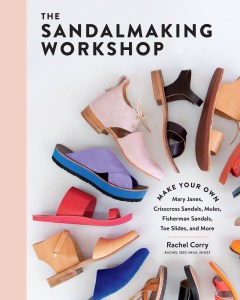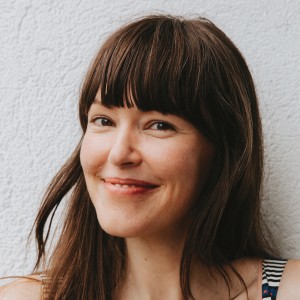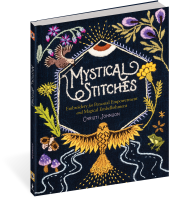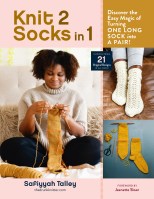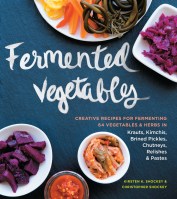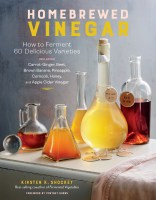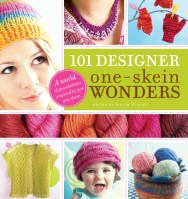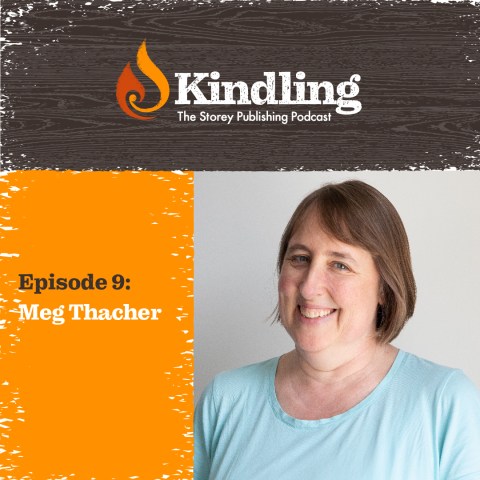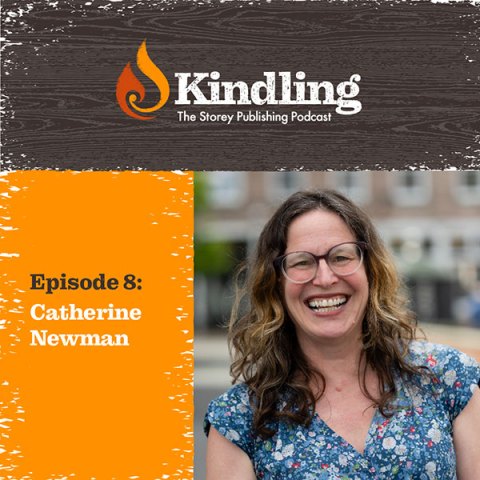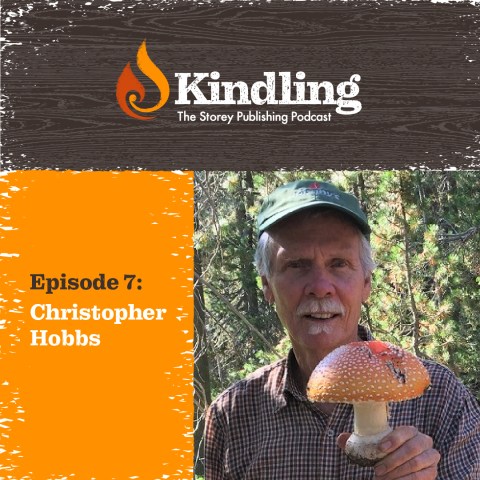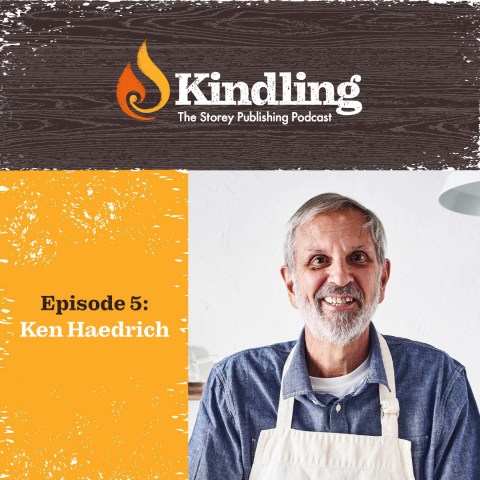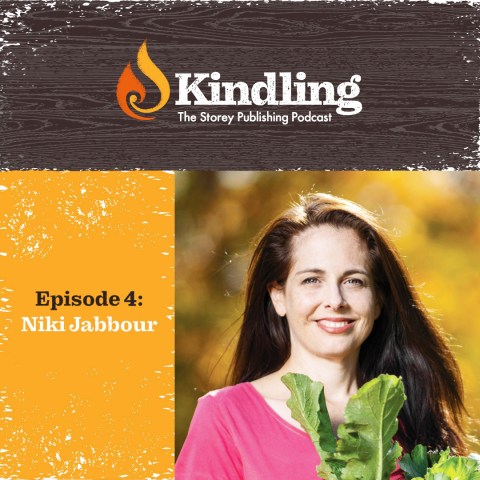Kindling Podcast Episode 13: Rachel Corry
Tune in as Storey project editor Mia Lumsden speaks with author Rachel Corry about her book The Sandalmaking Workshop.
In this episode of Kindling, author and shoemaker, Rachel Corry, explains what (literally!) sparked her interest in making sandals, how the lack of easy-to-follow instruction inspired her to write The Sandalmaking Workshop, and how accessible the craft is to everyone—she’s even taught it to an 11-year-old!
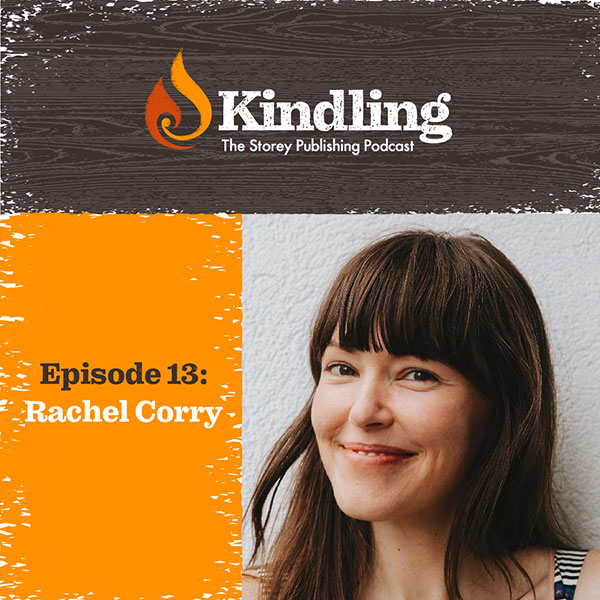
This episode of Kindling: The Storey Publishing Podcast can also be found on podcast platforms, including Spotify and iTunes. If you enjoyed this episode, please be sure to leave us a rating and review.
Full Podcast Transcript
Deborah Balmuth:
This is Kindling, the Storey Publishing podcast, where we explore the spark that ignites a deep-rooted passion for sustainable living. I’m Debra Balmuth, Storey’s publisher. From growing organic food and making herbal remedies to fermenting, weaving, and raising chickens. The authors we’ll meet will empower you with the skills and savvy they’ve gleaned from years of hands-on experience. In each episode of Kindling, you’ll learn what fuels these author’s excitement and what they love most about creating books that share their expertise and enthusiasm with the world.
Deborah Balmuth:
Have you ever considered making your own shoes? Rachel Corry thinks you should. She’s the author of The Sandalmaking Workshop. This photo-rich guide walks even the greenest of beginners through making a comfortable and stylish pair of sandals with simple tools and materials in less than a day. Storey project editor, Mia Lumsden recently spoke with Rachel who talked about the fire that inspired her to write this book. And to be clear, that fire was quite literal.
Rachel Corry:
It’s so bizarre. So, I had this small fire in my closet in San Francisco, and it just burned some of my clothes and pretty much all of my shoes. And I wasn’t in too much danger. The firefighters came and put it out pretty quickly. I was lucky, but there was a lot of smoke damage and just chaos. And somehow in the midst of that chaos, I just, because I’m like a clothing and vintage-like fetishist, I picked out some special shoes and clothes that burned and were singed, but I wasn’t ready to let them go. And when I looked at the shoes, in particular, I realized that the fire made the glue dis-adhere and they came apart in all of these layers. The sole came off basically, and I could see into the shoe. It was just fascinating to finally have this clear picture of how my favorite pair of sandals were constructed because I could see exactly how this strap went through this network of slots and how the sandal was made.
And it was because the design of this particular sandal was so clever and so cookie-cutter clear that I even felt motivated to try to make it. I was like, oh, that’s how it’s made. I could probably do this. Maybe someday I’ll do this.
Mia Lumsden:
That’s awesome. Can you describe what was the sandal like? You said it was kind of cookie-cutter, but what was the style like?
Rachel Corry:
Kind of a Jesus sandal, like a hippy sandal, just all leather, one long skinny strap that kind of wraps around the foot and buckles on the side. So the design wasn’t mind-blowing, but I just still liked how this one strap went through all these little channels. It’s basically like a leather Teva, but a little more complicated, if that makes any sense.
Mia Lumsden:
Yes. Is that like the hippie sandal in the book?
Rachel Corry:
Yeah, it’s exactly the hippie sandal in the book. That’s the exact same pair.
Mia Lumsden:
Most people then wouldn’t look at a shoe, a deconstructed shoe, and be like, I’m going to make this. And it’s awesome that you did, that that is the next step in that progression for you. And I’m just curious if you sort of remember your thought process back then, or like, how did you get from deconstruct a sandal to I’m going to be a sandal maker?
Rachel Corry:
Largely it probably stemmed from my cheapness and like, I didn’t want to buy another pair of sandals. Also, I was at the time, interested in making my own clothes, and I did have a little bit of background interest and curiosity about shoemaking. I had watched a shoemaker in England remake this same pair of sandals once before. There was a little bit of groundwork laid about shoe curiosity.
Mia Lumsden:
And then, so I’m curious after you made that first pair of sandals, how did you sort of immerse yourself in learning about shoemaking, and learning the history, and the different techniques, and stuff like that? How did you really get into it?
Rachel Corry:
So there wasn’t one great source of information about sandal making at that time, or nothing that I could find. I looked at some 70s books on leather craft, so it was just patchwork. I would check in with different makers I knew. I had a friend that made belts and he taught me a few tricks. I had friends that made bags, they taught me a few tricks. We walked down to the cobbler near my house and show them what I was working on and say, does this look normal? So I was just really kind of patching together a practice really slowly. But that’s part of why I wanted to create one resource for someone that wanted to do this because there wasn’t one that was clear to me at that time.
Mia Lumsden:
That’s awesome. I love the idea of, or I love the vision of you going to your corner cobbler going in there and asking for his advice. That’s awesome that you did. Were they receptive to you coming in and asking for their thoughts and advice and stuff?
Rachel Corry:
Yeah. I have this really great place down the street called Pioneer Renewer, just the best shoe repair in San Francisco. For whatever reason, they were really nice to me. And I remember the proprietor’s name was Al. He even showed me a pair of kind of sandals he had made for his kids for a play. And he had made them out of carpet samples, which I thought is so cool, but it was kind of neat realizing that a lot of people that make a living fixing shoes also have some knowledge and aspirations to make shoes. They just don’t have the time a lot of the time.
Mia Lumsden:
I was hoping you could tell the listeners a little bit about where the name of your brand came from. Rachel Sees Snail Shoes doesn’t necessarily roll off the tongue very easily, but I know it means a lot to you. So, I’m hoping you can tell that origin story as well.
Rachel Corry:
I knew that snails were the mascot sort of the slow food movement and maybe even the slow fashion movement, slow, meaning local, ethical, and kind of intentional. I don’t always check all those boxes with shoemaking because it’s such a tricky craft still to figure out like sourcing and stuff. But I did feel like I was slowly and methodically learning this old-world skill. And I loved snails by the way, separate from their association with slow movements. I had little pet aquatic snails, and I once made a really big snail sculpture. And I liked the idea of having a brand name that was playful and kind of childish and not super slick, not with the primary intention of selling, but more playful.
Mia Lumsden:
So, do you have a background in art? I know. I mean, you did all the hand illustrations for the book, and obviously, you design your shoes too. So, I’m just curious about your artistic and design background as well.
Rachel Corry:
Yeah. I always made art growing up, kind of identified as an artist because I never took any sports or music classes. So, the one thing I kind of could do was just go draw by myself. And then I studied art and design at UCLA. Yeah. So, it’s part of everything I do. And I still have a small art practice on the side, and I try to keep drawing on a regular basis. So, I don’t lose touch with that. It’s really fun to have a drawing practice, especially if you’re designing something like shoes, which I don’t even spend much time designing them these days. But it’s a really wonderful feeling to be able to draw something you’re thinking of, like to articulate it.
Mia Lumsden:
That part in the book where you talk about shoes from around the world. And just that you note in the folks’ shoes section, “The history of handmade footwear is full of surprising repetitions, innovations, embellishments, and adaptations. A few types of footwear, including, clogs, sandals, cloth shoes, and boots show up repeatedly around the globe because of their utility and economic use of materials.” Once I read that in your manuscript, I thought about it and I realized, she’s totally right. And those kinds of styles are in cultures around the globe, like cultures that you don’t think of as having much to do with each other.
Rachel Corry:
I know. I find that really endearing too, like, oh, everyone all around the world is making the same types of shoes. It’s very cute. If you go to a shoe museum, like, there’s a great one in Toronto. Yeah, it really dawns on you that there’s only a few types of footwear, and everyone kind of drawn to the same types over and over again.
It’s all for a reason. Like people used clogs to stay out of the mud and because there was plentiful wood. And people made sandals because it gave you a surface to walk on that was still cool and breathable. And people made boots probably to protect from snakes or weather. It’s like our needs haven’t changed that much. Although now that we walk on concrete, I do think that’s probably why everyone’s wearing sneakers because we created this concrete world and now we need more cushion. So, and the synthetic materials exist only in the last 100 years. And so sneakers, aren’t part of my list because they’re not as historical, but people are certainly wearing them now.
Mia Lumsden:
Do you have any advice for people? Like if they’re looking at your book and thinking, this seems really cool, but I can’t make shoes. That’s ridiculous. Who thinks of making their own shoes? It can seem really daunting. And so I’m just curious if you have some advice for someone who is, as you say in the book “shoe curious,” but maybe not quite ready to make that leap into making their own shoes. How would you encourage them to go ahead and take that step?
Rachel Corry:
I would probably first say that yeah, it seems intimidating, but first of all, you might imagine that you need, like, a lot of specialized tools, but I really feel convinced that you only need, like, three very basic affordable tools, and they probably have two of them already. So that shouldn’t be intimidating to anyone. Then some of the cutting can be a little hard at first if you don’t have the hand muscles developed yet, and you’re just cutting this brand-new thick material for the first time. But if you’re just really patient and methodical, you’ll do it. Anyone can do it. And I just watched an 11-year-old take, my class, yesterday and she did everything without even blinking an eye. So, these are all really good lessons. To learn confidence using a knife is just such a cool skill to develop and yeah, like making your own shoes. It is a big ask, but you’ll be so proud and so happy you did it. So, I think it’s worthwhile.
Deborah Balmuth:
That was Rachel Corry, author of The Sandalmaking Workshop, talking with story project editor, Mia Lumsden. To learn more about Storey Publishing’s books and authors, visit storey.com. That’s S-T-O-R-E-Y.com. And if you have questions or comments about what you hear on Kindling, let us know. You can email us at feedback@storey.com. That’s it for this edition of Kindling. Coming to you from the Berkshire Hills of Western Massachusetts. I’m Storey’s, publisher, Debra Balmuth. Thanks for listening.
